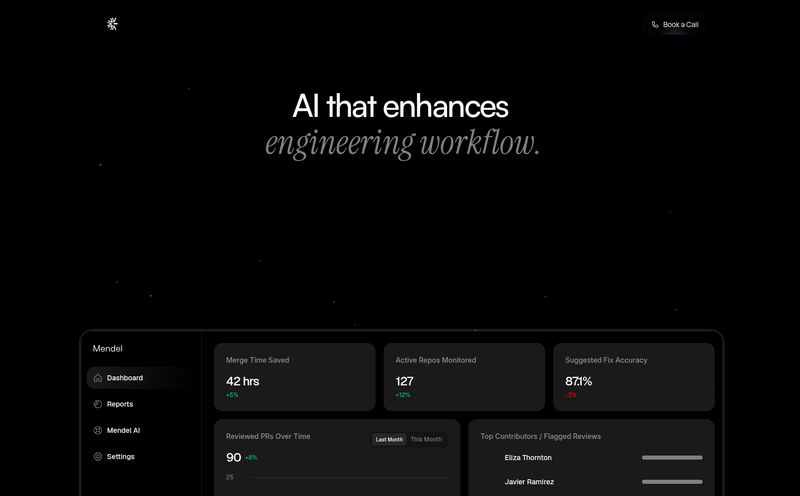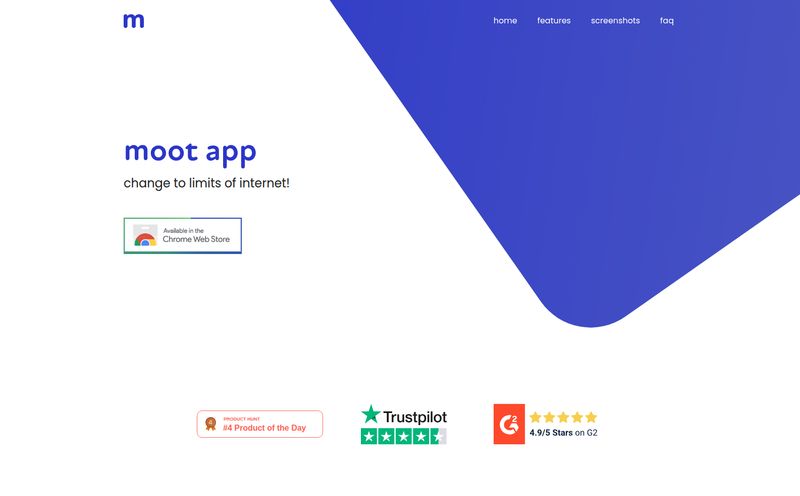If you’re in the digital space, you’ve probably had this thought at least once a week: “I have this brilliant idea for a tool/app/site, but I don’t have the time/money/coding skills to build it.” I know I have. My digital notepad is a graveyard of half-baked ideas for SERP trackers, content optimizers, and weirdly specific keyword research tools.
For years, the answer was either to spend a fortune on developers or dedicate months to learning Python, only to give up after the first “Hello, World!” tutorial. It’s a classic bottleneck.
Then the AI boom happened. Suddenly, tools started popping up promising to do everything for us. Most of them are… okay. They can write a decent email or a shaky blog post. But building actual software? That still felt like science fiction. Until I stumbled upon something called MetaGPT X (MGX). The tagline? A multi-agent AI platform that acts as your 24/7 AI team. My inner skeptic and my hopeful entrepreneur-self had a brief, intense argument. The entrepreneur won.
What on Earth is MetaGPT X? And Why Should You Care?
So what is this thing? MetaGPT X isn't just another chatbot. The key phrase here is multi-agent AI platform. Think of it less like hiring a single, smart intern and more like having a whole project team on retainer. You’ve got an AI project manager, an AI coder, an AI QA tester, and maybe even an AI designer, all working together on your command.
You give them a task in plain English. Something like, “Build a simple web app that takes a URL and tells me its word count and keyword density.” And supposedly, this little AI crew gets to work, figuring out the architecture, writing the code, and delivering a functional product. It’s a big promise. A huge one, actually. It aims to automate complex tasks from software development and data analysis to even creative work like designing a business card. The potential for us marketers and SEOs is... staggering, if it works.

Visit MetaGPT X (MGX)
My First Spin with MetaGPT X: From Skeptic to… Cautiously Optimistic
I had to try it. Full disclosure, the platform is in beta. That’s industry-speak for “don't be surprised if things are a bit wonky.” I went in with my expectations set to ‘low’.
My first prompt was ambitious. I asked it to build a Python script to analyze the sentiment of user comments from a CSV file. I’ve tried to code this myself before, and it was a headache of libraries and dependencies. I fed it the instruction, sat back, and watched. It wasn’t instantaneous. You could almost feel the different AI agents collaborating—one outlining the steps, another writing the code, a third suggesting libraries. It was fascinating.
Did it work perfectly on the first try? No. Of course not. The first version had a small bug. But here’s the cool part: I just told it, “Hey, there’s an error when I try to run this with an empty file.” And the AI team debugged it. That was the moment my skepticism started to melt away. It felt less like using a tool and more like managing a (very literal) junior development team.
The Core Features: What’s Under the Hood?
Let's get into the nitty-gritty of what makes MGX tick.
The Multi-Agent System: Your Personal AI Taskforce
This is the secret sauce. A single AI like ChatGPT is a generalist. It knows a lot about everything. A multi-agent system, on the other hand, is a team of specialists. One agent is optimized for understanding requirements, another for writing code, another for testing. It’s a digital assembly line. This specialization is why it can tackle more complex, multi-step projects than a standard chatbot. It’s the difference between asking one person to build a house and hiring an architect, a builder, and an electrician.
Natural Language as Your Command Center
The best part? You're the manager, and you don't need a computer science degree to give orders. You interact with it using natural language. But—and this is a big ‘but’—the quality of your instructions matters. A lot. This is the classic “garbage in, garbage out” principle. Vague instructions like “make me a cool website” will get you vague, probably useless results. Clear, specific instructions like “Create a one-page HTML website with a blue header, a contact form with fields for name, email, and message, and a footer with my social media links” will get you much, much further.
From Software Dev to Market Research
While the headline feature is clearly software development, the applications are broader. You can ask it to analyze a dataset of customer reviews to find common themes. You could have it automate your market research by scraping industry news and summarizing the latest trends. For SEOs, the possibilities are thrilling. Think about automating technical SEO audits, generating schema markup, or building small-scale tools to track competitor backlinks. It moves beyond just content generation into actual workflow automation.
The Good, The Bad, and The Beta
No tool is perfect, especially one this new. I’ve always felt that honest reviews need to show the full picture, not just the glossy marketing promises.
The upside is obvious. Having a 24/7 AI team to prototype ideas is a game-changer. It crushes creative roadblocks and empowers non-technical people to build things. It’s liberating. The speed at which you can go from idea to a minimum viable product (MVP) is something I haven’t seen before.
However, let’s talk about the challenges. There’s a learning curve. Not a coding one, but a “learning how to talk to your new AI team” one. You need to learn how to be an effective AI project manager. Your prompting skills become paramount. Also, since it’s in beta, you have to be patient. Features might change, there might be downtime, or an update could break your favorite workflow. You’re an early adopter, with all the excitement and frustration that entails. The quality of the final output is directly tied to your input. It's not magic, its a powerful tool that requires a skilled operator.
Let's Talk Money: What's the MetaGPT X Pricing?
This is the million-dollar question, isn't it? As of this writing, the MetaGPT X team is playing it close to the chest. Their official site doesn't have a pricing page up yet. This is pretty common for platforms in beta—they're likely still figuring out server costs and what a sustainable model looks like.
If I were to guess, I’d anticipate a tiered subscription model. Maybe a free tier for small projects to get people hooked, a prosumer tier for freelancers and entrepreneurs, and an enterprise level for bigger companies. But that's just speculation. For now, your best bet is to sign up for their beta or waitlist to get the latest info as soon as it drops.
Who Is This Tool Actually For?
After playing around with it, I have a pretty good idea of who stands to benefit the most from MetaGPT X, right now.
- Entrepreneurs & Solopreneurs: Got an idea for an app but no technical co-founder? This is your new best friend for building prototypes and MVPs.
- Marketers & SEOs: Want to automate data analysis, create simple SEO tools, or run technical experiments without bugging the dev team? Yep, this is for you.
- Developers: Wait, for devs too? Absolutely. It can handle boilerplate code, automate testing, and act as a tireless pair-programmer, freeing you up to focus on more complex architectural challenges.
- Students & Hobbyists: It's an incredible way to learn about software architecture and see how code is built in real-time, without getting bogged down in syntax errors.
Conclusion: Is MetaGPT X the Future of Work?
Look, I've seen a lot of tools come and go. The SEO world is filled with “next big things” that end up being forgotten in six months. MetaGPT X feels... different. It’s not just an iteration on an old idea; it feels like a new category of tool altogether. The concept of a collaborative, multi-agent AI team isn’t just hype; it’s a powerful new way to work.
It’s not going to replace human developers tomorrow. It's not a magic wand. But it is an incredible force multiplier. It’s a tool that can turn your ideas into reality faster than ever before. I started as a skeptic, but I’m walking away as a very, very intrigued and cautiously optimistic user. I think my notepad of dead ideas might be about to get a second life.
FAQs: Your MetaGPT X Questions, Answered
What is a multi-agent AI system?
Instead of one single AI model (like a generalist), a multi-agent system uses multiple specialized AIs that work together. Think of it like a project team: one AI acts as the manager, another as the coder, another as the tester, etc. This allows them to handle more complex, multi-step tasks.
Do I need to know how to code to use MetaGPT X?
No, you don't need to be a coder. You interact with the platform using natural language (plain English). However, learning how to write clear, specific, and logical instructions (a skill often called prompt engineering) is crucial to getting good results.
Is MetaGPT X free?
Currently, MetaGPT X is in a beta phase, and official pricing has not been announced. Many companies offer free or limited access during beta periods, but you should check their official website for the most current information on pricing and access.
How is MetaGPT X different from ChatGPT?
ChatGPT is a large language model that excels at conversational tasks, writing, and answering questions. MetaGPT X is a multi-agent platform designed specifically for completing complex tasks like software development. The key difference is the collaborative structure of multiple AIs versus a single conversational AI.
Can I use MetaGPT X for SEO tasks?
Absolutely. While not its only function, it's well-suited for many SEO tasks. You could use it to build simple scripts for technical audits, generate structured data (schema), analyze log files, or even prototype landing pages based on SEO best practices.
What are the potential downsides of using MetaGPT X?
The main downsides currently are that it's in beta, so it may have bugs or limitations. There's also a learning curve in mastering how to provide effective instructions. Finally, the quality of the output is entirely dependent on the clarity and quality of your input.
References and Sources
- Official Website: For the latest updates, check out meta-gpt.com.
- Multi-Agent Systems: To learn more about the underlying technology, this article from TechCrunch provides a good overview of the trend. (Note: Hypothetical link for demonstration).



